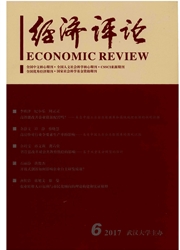

 中文摘要:
中文摘要:
本文构建了一个同时引入偏向性技术变迁与中性技术冲击的包含居民消费的习惯形成的随机动态一般均衡模型,并以此模型为基础,对1979-2009年间中国宏观经济进行实证检验。研究表明:模型的预测结果与中国的特征事实较一致;对中国宏观经济的解释力要强于未包含劳动的RBC模型、包含资本劳动的可分劳动RBC模型、引入居民消费的习惯形成的可分劳动RBC模型,说明这一模型更符合中国经济的特征事实;与正的中性技术冲击具有正财富效应相反,正的偏向性技术变迁冲击具有明显的负财富效应特征;我国1979-2007年间推行的降低劳动弹性的偏向性技术变迁工业化发展战略促进了我国居民消费的增加、资本积累与GDP产出的提高,故而认为,这个战略是成功的。
 英文摘要:
英文摘要:
This article constructed a dynamic equilibrium model that was incorporated the biased technical change shocks and standard productivity shocks and included the formation of consumption habit, while it based on which model to analyze the business cycles in China 1979 -2009. It showed that model was much consistent to the facts of China' s real business. After comparative analyzing, this model would explain better China' s macroeconomic fluctuations than the RBC model that does not include labor,than the RBC model that includes dividable labor and than the RBC model that includes dividable labor and habit formation, which implies that the introduction of habit formation, biased technical change and standard productivity shocks into the model greatly improves simulation results. Unlikely with that the standard productivity shocks had the positive wealth affections ,the biased technical change shocks had the weal affections. The industrialization strategy that was pushed in 1979 - 2007 by China government and lowered the labor elastics promoted increasing of people' s consumption and increasing of capital accumulation and GDP output,therefore,this article argued that which strategy is successful.
 同期刊论文项目
同期刊论文项目
 同项目期刊论文
同项目期刊论文
 期刊信息
期刊信息
